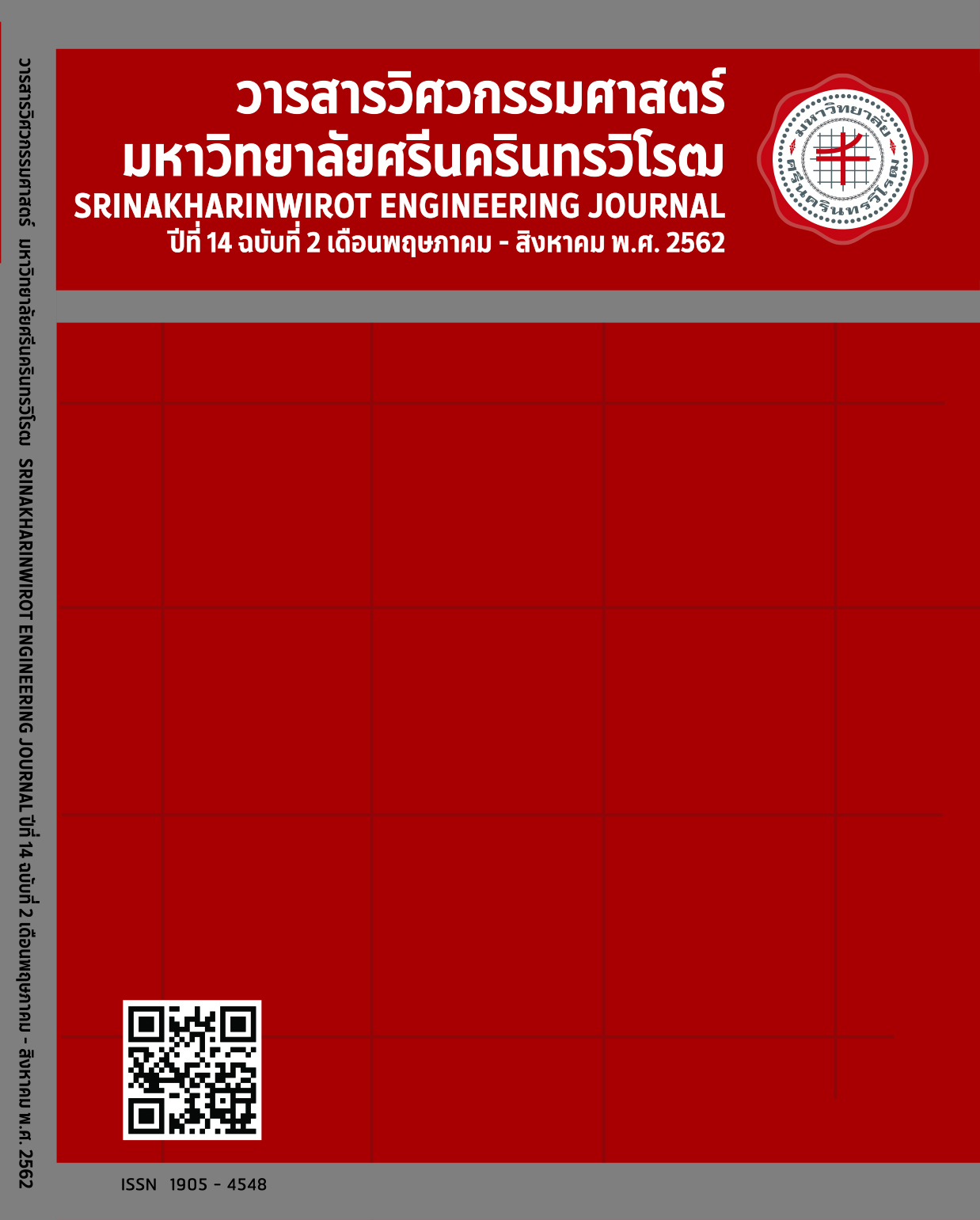The Comparison of SVC Control Methods for Voltage Compensation and Power Factor Improvement in Single-Phase Power Systems
Main Article Content
Abstract
This paper presents the voltage compensation and power factor improvement using Flexible AC Transmission Systems (FACTS), Static VAR Compensation (SVC) for single-phase power systems. The performance comparison of SVC with three control methods such as Voltage Control (VC) method, VAR Compensation Control (VCC) method, and Voltage and VAR Compensation Control (VVCC) method are proposed. The design of SVC parameters depend on the mathematical model which is also presented in this paper. For performance testing, the hardware in the loop simulation technique using MATLAB/Simulink program and TMS320C2000TMExperimenter Kit DSP board are applied to Simulate voltage compensation and power factor improvement via the SVC. The simulation results show that the SVC controlled by VVC and VVCC methods can provide similarly a good performance and better than VC method. However, the voltages at point of common coupling (PCC) and power factor values after compensation by three control methods. are satisfied under Provincial Electricity Authority’s Regulation on the Power Network System Interconnection Code B.E.2559 (2016).
Article Details
Copyright belongs to Srinakharinwirot University Engineering Journal
References
[2] N. G. Hingorani and L. Gyugyi, Understanding FACTS Concepts and Technology of Flexible AC Transmission Systems, 1st Indian Edition, IEEE Press, New York and Standard Publishers Distributors, Delhi, 2000.
[3] Y. Zhou et al., “An Improved Topology of Unified Power Flow Controller Based on MMC with Fault Current Limiting,” 8th IET International Conference on Power Electronics, Machines and Drives (PEMD 2016), Glasgow, 2016, pp. 1-6.
[4] Shagufta Khan and Suman Bhowmick, “ A Novel Power Flow Model of a Static Synchronous Series Compensator (SSSC),” 6th IEEE Power India International Conference (PIICON), Delhi, 2014, pp. 1-6.
[5] Youjie Ma et al., “ The Discussion on Static Synchronous Compensator Technology,” IEEE/PES Transmission and Distribution Conference and Exposition, Harbin, 2016, pp. 106-111.
[6] Esther Barrios-Martínez and Cesar Ángeles-Camacho, “Technical comparison of FACTS controllers in parallel connection,” Journal of Applied Research and Technology, vol. 15, pp. 36-44, Feb. 2017.
[7] Nedzmija Demirovic, “Impact of statcom and SVC to voltage control in systems with wind farms using induction generators (IG),” Mediterranean Conference on Power Generation, Transmission, Distribution and Energy Conversion, Belgrade, 2016, pp.1-6.
[8] R. You and M.H. Nehrir, “ A Systematic Approach to Controller Design for SVC to Enhance Damping of Power System Oscillations,” IEEE PES Power Systems Conference and Exposition, New York, 2004,
pp. 1134-1139.
[9] Mehrdad Ahmadi et al., “Comparison of SVC and STATCOM in Static Voltage Stability Margin Enhancement,” International Journal of Electrical and Electronics Engineering, vol. 38, pp. 324-328, Feb. 2010.
[10] N. A. M. Kamari et al., “ Optimal Design of SVC-PI Controller for Damping Improvement Using New Computational Intelligence Approach,” Journal of Theoretical and Applied Information Technology, Vol. 42, pp. 184-189, Aug. 2012.
[11] Hardware in the Loop from the MATLAB/Simulink Environment, Altera Corporation, 2013, pp. 1-9.


